The view from the top of Masada overlooking the Dead Sea is one of the best views I have seen in my entire life. Standing on this isolated rock cliff in the middle of the Israeli desert, looking out across to the Dead Sea, I couldn’t believe how beautiful it is up there. The Dead Sea is a spectacular shade of turquoise blue, and all you see is desert for miles and miles around it. There’s something so striking about this landscape.
But what makes visiting Masada so special and poignant is the story behind it.
The palace and fortress at Masada was built by King Herod the Great between 37 and 31 BCE, to protect him from his enemies and external forces. If anything happened in Jerusalem, he could flee and live out his days at Masada.
Many years after King Herod’s death, at the beginning of the great revolt against Rome in the year 66 CE, a group of Jewish zealots fled Jerusalem to to take refuge from the Roman army, and Masada became their last stronghold. They were joined by another group of Zealots after the fall of Jerusalem in 70 CE. Led governor Flavius Silva, the Roman Army were determined to defeat this last outpost and marched to Masada in 73 CE, where they built army camps around the base. They used Jewish slaves to build a wall around Masada, and a ramp against the Western side. Once the ram was completed, they built a battering ram to destroy Masada’s wall.
But when the Romans finally marched into Masada, they found it empty.
As the Romans approached, the 960 Jewish Zealots living at Masada decided they would rather kill themselves than see their wives raped and their family members become slaves. On the last night the Zealot leader Eleazar ben Ya’ir gathered everyone together and made a speech, then they burned the fortress and committed mass suicide. The men killed their wives and children and cast lots to choose 10 men to kill those who remained. One last man killed the nine others and then himself. Only two women and five children were found alive.
Almost all historical information about Masada comes from Jewish Roman historian Josephus, who wasn’t there at the time and who learnt of the story through secondary sources, so no-one knows the exact facts of what happened here. But the tragic events during the last days of these Jewish rebels has become a symbol of Jewish national identity. For me it is a story of bravery.
Visiting Masada
I heard many people say that the best way to visit Masada is by hiking up the Snake Path for sunrise. However we had a fairly packed itinerary on our tour of Israel, so we took the cable car to the top instead. The hike up the Masada snake path is not for the faint-hearted, it can take anywhere between 40 minutes to 2 hours depending on your stamina and speed, and in the heat it would be pretty exhausting.
Before you begin your ascent to the top of Masada, there is a shop at the visitor’s centre where you can stock up on snacks and buy a hat before you head to the top. This is the last place you can purchase anything, so make sure you have everything you need!
Prior to boarding the cable car, we entered a dark room where we watched a short film about Masada. Since I had never seen the movie ‘Masada’, starring Peter O’Toole, and I wasn’t very familiar with the story, I appreciated the video explaining what happened. It was rather dramatic and really set the stage for what we were about to see.
Once at the the top, this is the view that greeted us:
Our guide, Gadi, took us round the ruins of Masada to see of the rooms that have been preserved there. You can see some of the original wall paintings which are well preserved due to the interesting technique- the frescoes were created by applying the pigment to wet plaster, so that it would soak into the wall. We walked through some of the store rooms for food and a Roman-style bath house, with a caldarium (hot bath), tepidarium (warm bath) and frigidarium (cold bath). We saw mosaic floors and other interesting features that have been restored and preserved by architects here.
Of course in order for people to be able to live up on this incredibly tall rock plateau in the middle of the desert, Herod had to be able to get water up here. On an isolated cliff with very little rainfall, where were they to get this water from?
The water systems consisted of a dams that diverted rainwater from the two wadis west of Masada into two plastered channels that fed a group of cisterns in the northwestern slope of the rock. The cisterns in the sides of Masada can hold 10 million gallons or 40,000 cubic metres. That’s a lot of water!
You can also see a model of what King Herod’s impressive residential palace looked like. Known as the “Northern Palace”, it was located on the northern edge of Masada over three terraces, with incredible views out to the Dead Sea. Funnily, there is no record that Herod ever stayed here!
Inductees to the Israeli Defense Forces take an oath at Masada, chanting; “Masada shall not fall again.” While we were there we saw a group of soldiers, although I don’t think they were there to take the oath; they were visiting Masada to learn about their country’s history.
Standing in front of the ramp at Masada, I tried to imagine what it would have been like for the Jewish Zealots to watch as the Romans approached, knowing that there was nothing they could do and eventually they would be captured. The ramp was built on this side because it wasn’t as steep, so it was much easier to reach the top.
A visit to Masada is an unforgettable experience- not just for the view, but the story too.
Once you have taken the cable car back down again, don’t forget to visit the Masada museum, where you will be given an audio guide. Unfortunately I couldn’t take any photos inside to share with you. In the museum you can see lots of artefacts uncovered from Masada, including coins, a braid of hair, amphoras for containing food, and the broken pieces of pottery with different names written on them- supposedly the names of the Jewish rebels who drew lots to decide who would be responsible for whose death, and which person would be the last standing to die on his own sword.
Masada Opening Hours
Make sure you check the opening hours before you go.
The Snake Path opens about one hour before sunrise, and is closed if it gets extremely hot. Masada is open on Shabbat (Saturday). The museum and the rest of the park are open 8am to 5pm from April-September, and 8am-4pm from October-March. On Fridays and holiday eves, the site closes one hour earlier.
The cable car operates 8am-4pm Saturday to Thursday, and 8am-2pm on Fridays and holiday eves.
There are a few food outlets in the visitor’s centre (I thought it was outrageous there is a MCDONALDS there!) and there is also a gift shop where you can purchase Dead Sea beauty products.
My trip to Israel was organised by the Israel Ministry of Tourism. Opinions, as always, are my own.

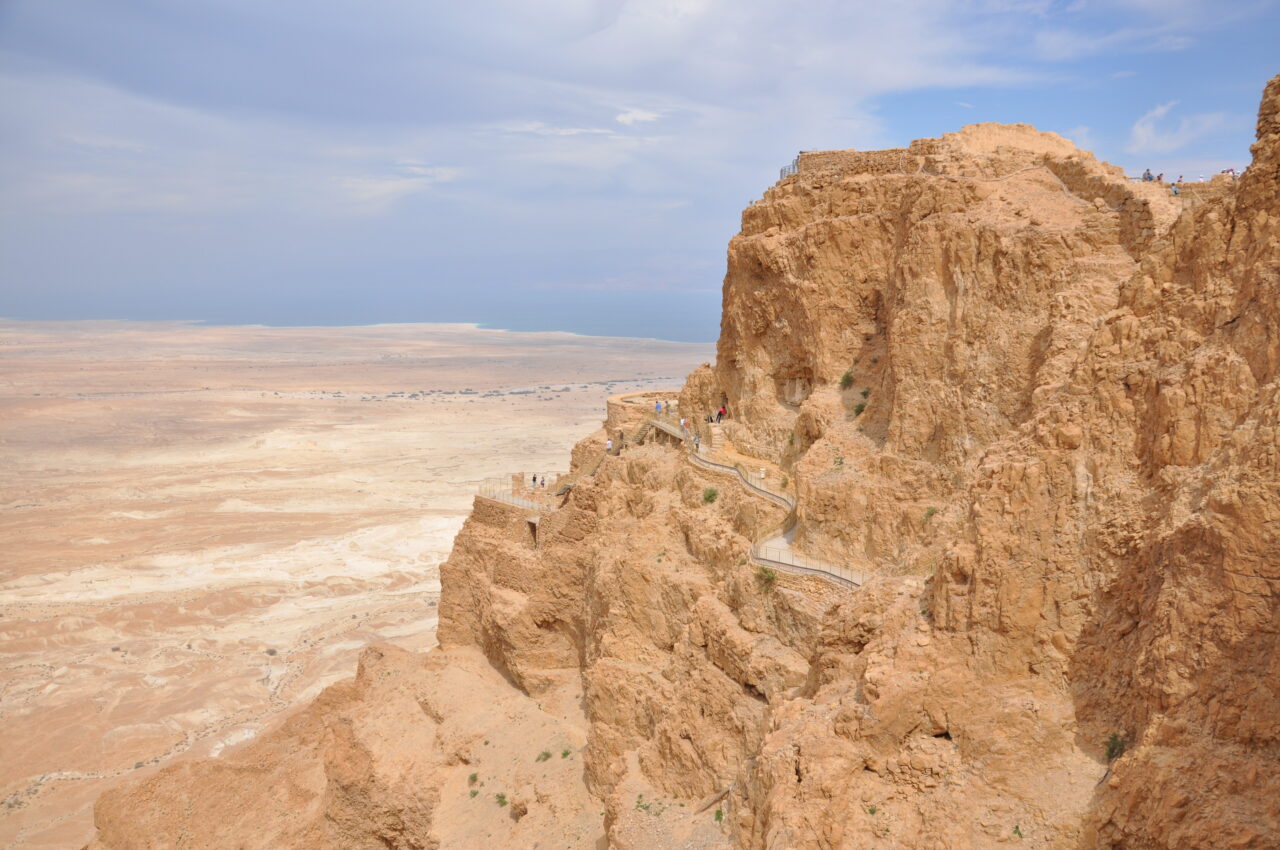
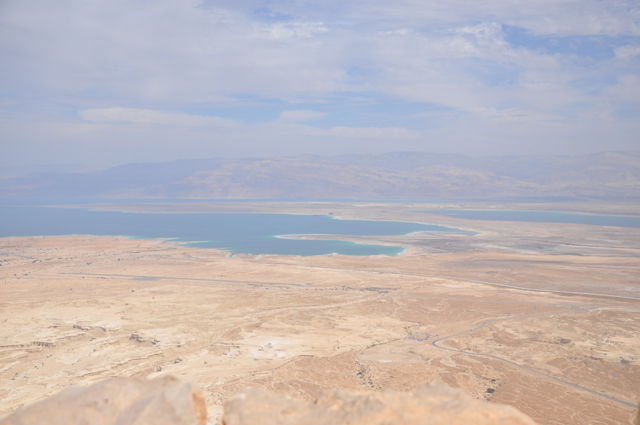
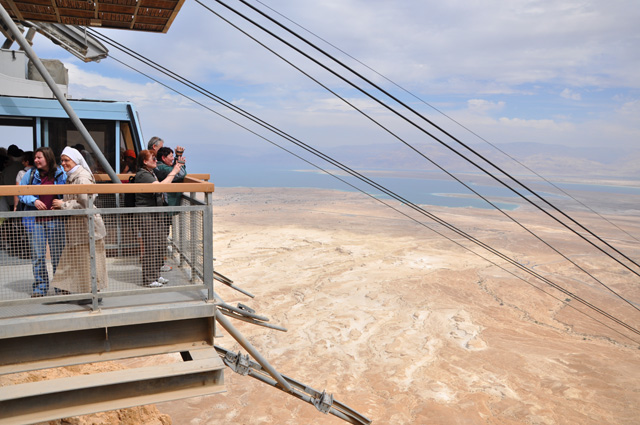

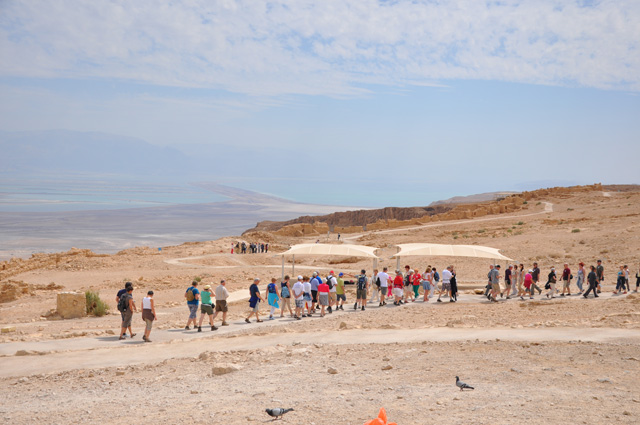
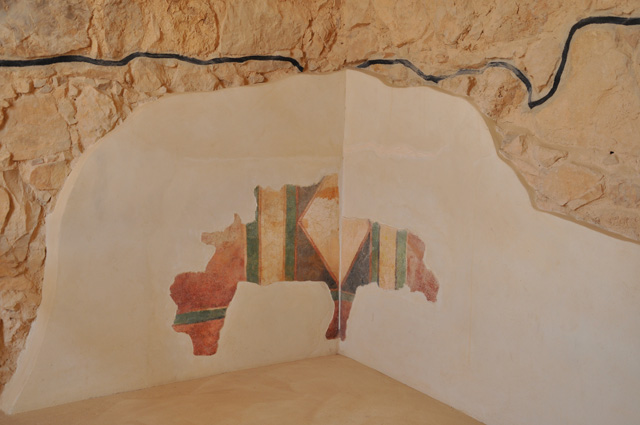
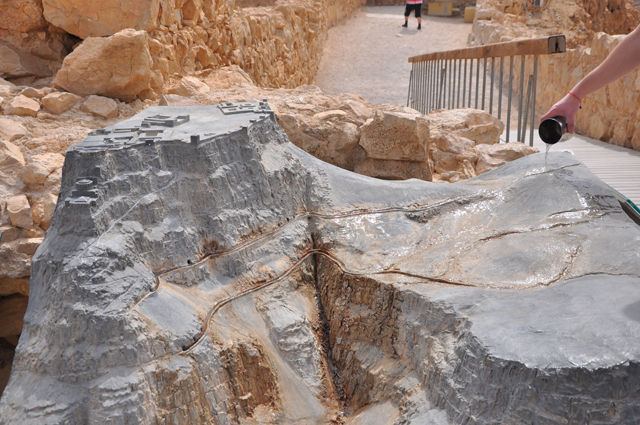
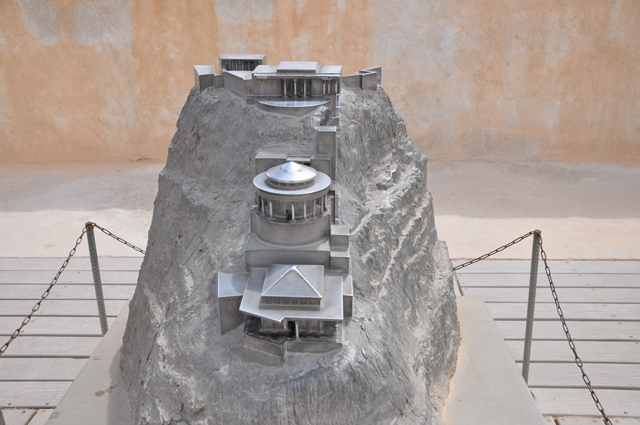
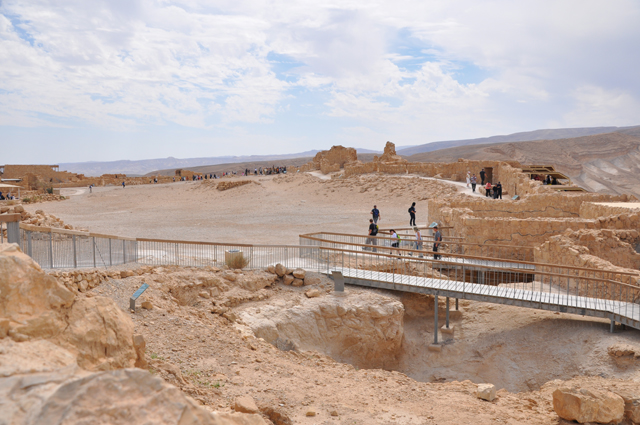

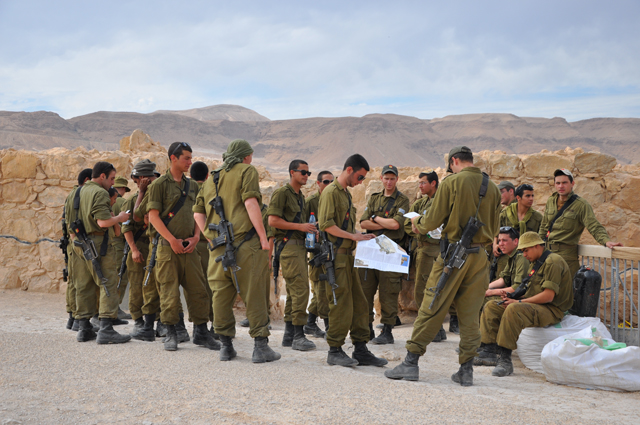
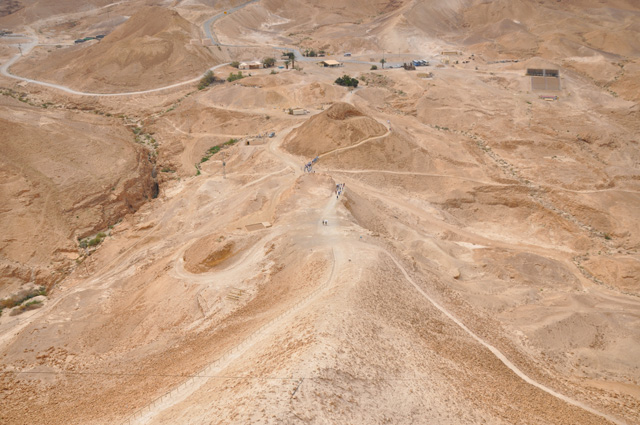
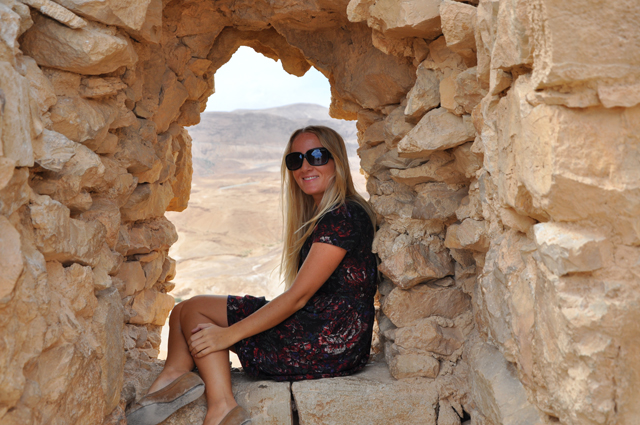
Very cool!! I travelled and blogged about Masada and Israel last summer! Amazing place!